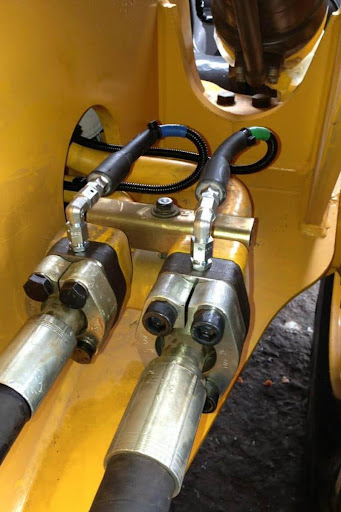The rapidly developing mining and construction sectors with material handling operations depend on efficient precision measures to create immediate financial outcomes. The mining along with building sectors experience a total transformation through wheel loader weighing systems which form part of numerous technical advancements redefining these industries.
By incorporating advanced measurement technology straight into the machinery that processes materials, wheel loader weighing system removes these problems. However, how can these systems improve accuracy and efficiency across activities, and what precisely makes them so revolutionary? Let’s examine the many advantages that these technologies offer to contemporary material handling operations.
Wheel Loader Weighing Systems: An Overview
The fundamental components of wheel loader weighing systems are advanced on-board technology that precisely measure cargo weights while loading. Real-time material weight determination happens through systems which employ complex software algorithms together with accelerometers and pressure sensors as the loader bucket elevates. Operating personnel can see the present weight measurement along with weight goals through an onboard display.
The hydraulic systems of the machine are easily integrated with contemporary wheel loader weighing systems, which detect the pressure required to lift goods and translate these readings into precise weight estimations.
Removing Bottlenecks in Weighbridges
Reducing or eliminating weighbridge dependence is one of the biggest efficiency improvements from using wheel loader weighing systems. Conventional methods slow down the entire process by requiring vehicles to drive to centralized weighing stations after loading.
Think about the usual situation: a truck loads up, travels to the weighbridge, finds that it is either overloaded or underloaded, comes back for adjustments, and then weighs once more. Before reaching the ideal load, this process may be repeated several times. Every cycle increases equipment wear, wastes critical time, and burns more fuel.
Wheel loader scales and lorry on board weighing systems radically alter this procedure. Weighbridge trips and modifications are avoided when trucks acquire correctly calculated loads the first time. By cutting loading cycle times by 15–25%, this simplification can greatly increase the volume of loads handled in a single shift.
This efficiency boost results in significant productivity gains for operations that handle hundreds of loads per day; more goods can be transported with the same staff and equipment, which immediately improves the operation’s financial performance.
Advantages of Precision Loading and Compliance
Accuracy is not merely a technical requirement because it provides concrete operational benefits together with financial benefits. The integration of wheel loader weighing systems enables exact weight distribution of optimal loads for each vehicle which operates within approved weight limits.
Truck overloading creates various issues which include elevated fuel spending as well as vehicle degradation and the risk of traffic enforcement stoppage and safety risks. oustic practice consists of not filling transportation capacity to its maximum which leads to empty space and additional transportation costs.
Operations regularly reach the “sweet spot”—maximizing payload without going over limits—thanks to wheel loader weighing systems, which enable precise loading. Usually, this modification results in an 8–12% increase in transportation efficiency, which is a significant gain that lowers expenses per ton moved.
Additionally, these systems keep thorough records of every shipment, offering proof that transportation laws are being followed. This capacity to preserve records helps create a compliance culture across the organization and is extremely helpful during regulatory inspections.
Operational Intelligence with Real-Time Data
In addition to weighing materials, contemporary wheel loader weighing systems produce helpful operational data that improves decision-making. Productivity indicators including tons moved per hour, loads finished, and equipment utilization rates are monitored by these systems.
The gathered data enters management systems for analysis to pinpoint bottlenecks, maximize equipment placement, and raise overall operational effectiveness. Previously hidden performance trends are now visible to managers, enabling data-driven decision-making as opposed to management based on gut feeling.
Analysis may show, for instance, that some operators routinely attain greater productivity rates, which could result in the discovery and dissemination of best practices. Or the statistics may indicate that production declines with time, leading to an examination of the underlying reasons, such as inefficient processes or equipment limits.
This knowledge also applies to inventory control. Wheel loader weighing devices improve the accuracy of inventory tracking by giving precise, real-time information regarding material movements. Operations are better able to manage inventory levels, which lowers the possibility of shortages or overstocks that could cause delays in projects or capital commitments.
Maintenance and use of equipment are improved
Since equipment is a major capital investment for any organization, financial performance depends on its optimal use. Weighing systems for wheel loaders improve equipment management in several ways.
First, each piece of equipment manages more productive work throughout its operating hours by doing away with inefficient loading methods like making several journeys to weighbridges. The operation’s capacity is essentially increased by this better usage without requiring any capital investment.
Second, regular overloading causes equipment stress, which can be avoided with consistent, ideal loading. Operators may frequently overload buckets and attachments due to inaccurate weight information, which could accelerate wear and lead to premature failure. Weighing systems for wheel loaders give the accurate feedback required to maintain loads within equipment parameters.
Furthermore, the information gathered by these devices aids maintenance staff in spotting usage trends that could point to emerging mechanical problems. Proactive maintenance that minimizes expensive downtime can be made possible by abnormal pressure readings or performance changes that can identify issues before they lead to failures.
Environmental Advantages & Fuel Efficiency
The efficiency savings from wheel loader weighing systems translate into significant sustainability improvements in an era of growing fuel prices and environmental consciousness. Through load optimization and the removal of superfluous movements, these technologies directly lower fuel usage.
Reduced idling time while waiting for weighing, fewer visits between loading sites and weighbridges, and optimal transportation loads are all factors that lead to less fuel use. After putting these solutions in place, operations usually report fuel savings of 5–10%, which translates into lower carbon emissions and cost savings.
Accurate loading also guarantees that transport trucks run at maximum efficiency, avoiding strain from heavy loads and fuel waste from transporting partial loads. The entire fleet of equipment benefits from this optimization, which adds to environmental advantages that help achieve sustainability objectives.
Accurate Billing and Customer Contentment
Wheel loader weighing systems significantly increase billing accuracy and customer relations for businesses that sell materials by weight, such as aggregate providers, recycling facilities, or quarries. By providing certified weights recorded at the point of loading, these systems remove disagreements regarding supplied quantities.
Customers can frequently access digital weight records via Internet portals, which fosters transparency and trust. Suppliers keep thorough records for accounting and inventory management, while customers receive detailed documentation outlining exactly what they have purchased.
This precision extends to internal cost allocation as well as client relations. Wheel loader weighing systems allow for accurate tracking of material movements during construction activities that move materials between project stages or sites, enhancing project costing accuracy and facilitating better budgeting for subsequent work.
Conclusion
A revolutionary development for material handling operations across industries is the combination of wheel loader weighing systems and lorry on board weighing systems. These solutions address long-standing inefficiencies in traditional operations by delivering accurate measurement capabilities down to the point of loading.
These solutions are low-hanging fruit for businesses that still use external weighing or estimate techniques to boost performance and gain a competitive edge in difficult marketplaces.



